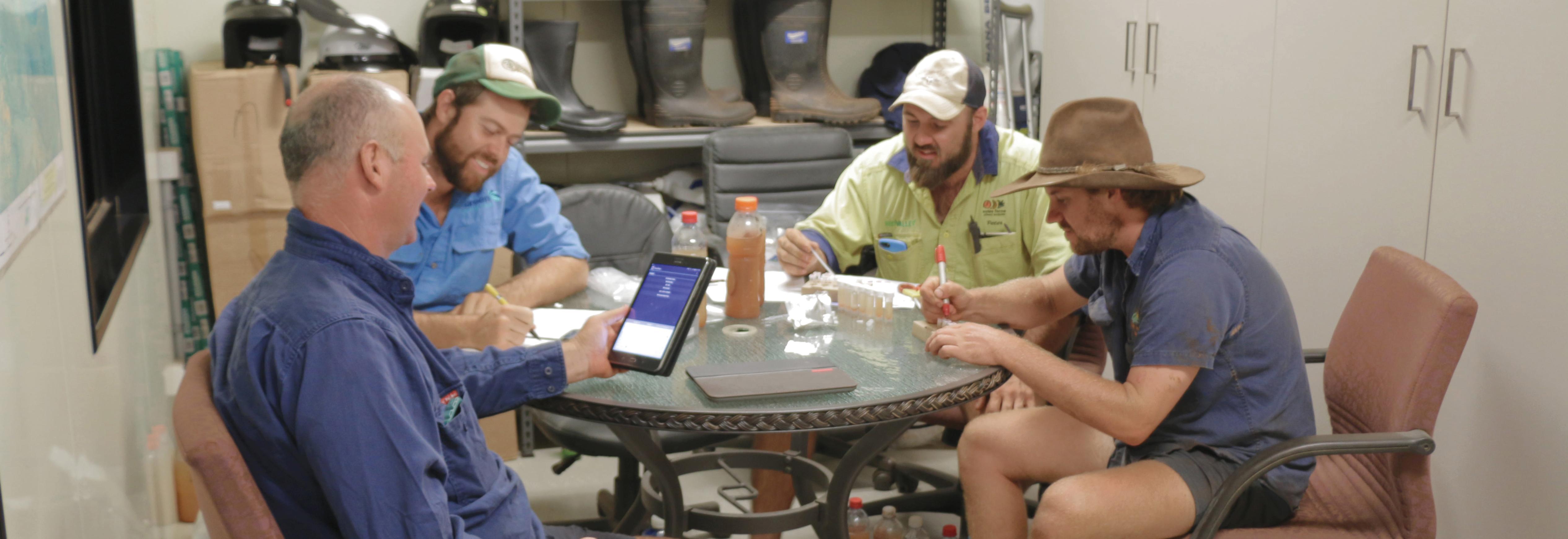Lakeland farms lead water quality monitoring
Lakeland farms lead water quality monitoring
Agricultural producers on Cape York have embraced technology to track the water run-off from their banana farms.
Kureen Farming and Swiss Farms are using KP samplers and photometers, to test the levels of nitrogen present in water run-off, and to monitor water quality in the area.
Little is known about nitrogen run-off from banana paddocks in Lakeland so Cape York NRM encouraged the Lakeland farmers to establish a farmer-based water quality monitoring program and they began gathering baseline information during the 2017 wet season.
Cape York NRM staff were inspired by the farmer based programs that BBIFMAC (Burdekin Bowen Integrated Floodplain Management Advisory Committee) and Sugar Research Australia were doing with cane farmers in the Burdekin and Wet Tropics. BBIFMAC developed the KP samplers to make on farm sampling of runoff events cheaper and easier for farmers. Sugar Research Australia is using the same samplers and photometers with cane farmers in the Wet Tropics.
Paul Inderbitzin from Kureen Farming said that the installation of the KP samplers, which automatically collect water samples during rainfall runoff events, was easy.
“Simplicity is the best attribute of the KP Samplers. They are installed with one star picket so it only took us half an hour to install them” Paul said. “We moved the one sampler to two sites in the wet season.”
A photometer (which measures light passing through the sample to detect nutrient concentrations) was used to analyse the water samples.
The photometers, from the United States, use an enzymatic reaction which is more accurate than other field test kits that are available in Australia.

“The photometers took a bit more concentration and time to learn the sampling protocol. You have to follow the method exactly otherwise the data will be unreliable, but once you have the method sorted out you can analyse seven samples in half an hour” Paul said.
Collecting and storing the samples was straightforward. After each rain event the sampler was emptied into two bottles labelled A and B. These were placed in the freezer. Once there were enough samples, the A sample was defrosted and tested using the photometer. Sample B was left in the freezer in case secondary testing was required to confirm results.
Paul said that he hoped the water quality data would assist with future farm management, but that more data was needed before it could be used to inform on-farm decisions.
“At the moment we just want to get some more samples so that we have a library of results from different rainfall events at different times of the year.
“We need to get more than one season’s worth of data to understand how consistent the results are. Then we can compare to results in other studies - for example comparing Lakeland Dry Tropics banana system to Wet Tropics banana system” he said.
The installation of the equipment has opened the doors to other monitoring possibilities on the farm.
“In this last wet season we sampled two sites draining from banana paddocks on our farm. In future it would be good to sample water entering and leaving our on-farm water storages. That would help us to understand whether our on-farm water storages are helping to reduce nutrient runoff” Paul said.
Cape York NRM will work with farms to interpret the results of the water quality monitoring, and to learn how water quality is impacted by differing rain events in Lakeland.
For more information about this project, contact Michael Goddard on 0498 760 022; and for more information about the KP Event Samplers please contact BBIFMAC on P: 07 4783 4344, M: 0429 834 344 or E: secretary@bbifmac.org.au

-
< prev
-
next >

